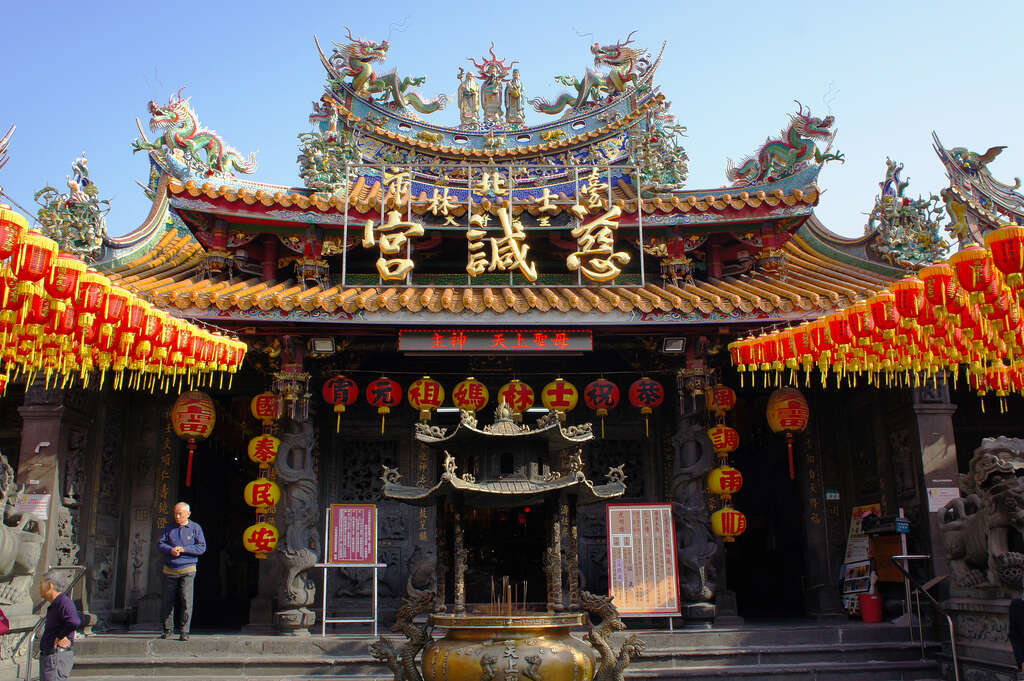Shilin Ciyuan Temple Introduction
Shilin Ciyun Temple, also known as Shilin Mazu Temple, is dedicated to the Heavenly Mother and is located within the famous Shilin Night Market. The temple's predecessor was built in 1796 (the first year of the Jiaqing period of the Qing Dynasty) on land donated by a local businessman, He Jintang, and was originally called Tianhou Temple. In 1859 (the ninth year of the Xianfeng period), a violent conflict occurred between the Zhang and Quan factions, and Zhilong Street was also affected by fire, leading to the destruction of Tianhou Temple. After the old street was burned down, gentry member Pan Yongqing proposed relocating and building a new street, receiving strong support from most of the residents. They chose to establish the new street at the lower Shilin area, which is today’s Shilin New Street. At the same time, the central area of the street was planned for the temple site, which is the current location of Ciyun Temple. Ciyun Temple features a layout with two main halls, two corridors, and two dragon-protecting structures, forming a total of five courtyards. The two halls are connected by water corridors leading to the dragon protectors, exemplifying a typical Minnan-style temple. The roof of the first courtyard’s San Chuan Hall is designed in the style of a hip-and-gable roof, commonly referred to as the "Prince's Tower." The octagonal columns of the main hall's entrance are from the Guangxu period, while the left and right Qilin blocking figures date back to 1828. The intricately painted deities and door gods, such as Wei Chigong and Qin Shubao, are notable works by the modern craftsman Chen Yufeng. Next to the main hall, there is a stone wall depicting the old streets of Shilin, allowing visitors to reminisce about the historical appearance of Shilin's streets.























